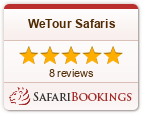Private Conservancies vs National Parks: The Future of Safari in Kenya
WE TOUR SAFARIS LIMITED
Discover Kenya’s Hidden Gems
Published: September 2025 | By We Tour Kenya Editorial Team
The landscape of safari tourism in Kenya is evolving rapidly. While iconic national parks like Maasai Mara and Amboseli continue to draw millions of visitors annually, a growing number of discerning travelers are discovering the exclusive world of private conservancies. These protected areas offer a more intimate, personalized safari experience that’s reshaping how we think about wildlife tourism.
What Makes Private Conservancies Special?
Private conservancies in Kenya operate on a fundamentally different model than national parks. Typically established through partnerships between local Maasai communities and conservation organizations, these areas prioritize both wildlife protection and community development. Unlike national parks, where visitor numbers can reach overwhelming levels during peak seasons, conservancies limit the number of guests, ensuring a more exclusive and environmentally sustainable experience.
The Maasai Mara ecosystem, for instance, extends far beyond the national reserve boundaries. Conservancies like Ol Choro Oirowua, Naboisho, and Mara North occupy crucial wildlife corridors and seasonal grazing areas. Here, traditional Maasai land use practices blend seamlessly with modern conservation efforts, creating a model that benefits both wildlife and local communities.
“In conservancies, you might encounter a pride of lions without another vehicle in sight for hours. It’s the difference between watching a documentary and living within it.” – Safari Guide, Mara North Conservancy
The Exclusive Advantages
Private conservancies offer experiences that simply aren’t possible in national parks. Night game drives reveal the nocturnal world of leopards, aardvarks, and bush babies. Walking safaris allow you to track animals on foot with experienced Maasai guides, learning about traditional tracking methods and medicinal plants. Off-road driving means following predators across the landscape without being restricted to designated roads.
The accommodation options in conservancies are equally impressive. Instead of large lodges catering to hundreds of guests, conservancies feature intimate camps with 10-20 tents maximum. These aren’t just places to sleep – they’re sanctuaries designed to immerse you in the African wilderness while maintaining the highest standards of luxury and comfort.
Conservation Impact
The conservation model employed by private conservancies is remarkably effective. By providing direct economic benefits to local Maasai communities through lease payments, employment opportunities, and revenue sharing, conservancies create powerful incentives for wildlife protection. Community members become active guardians of the ecosystem rather than passive observers.
Recent wildlife census data shows that conservancy areas often have higher predator densities than national parks. The reduced human pressure and active anti-poaching efforts create ideal conditions for wildlife recovery. Black rhino populations, nearly extinct in the 1980s, are thriving in conservancies like Ol Pejeta, where the last two northern white rhinos on Earth are carefully protected.
The Cultural Connection
One of the most profound aspects of the conservancy experience is the cultural immersion. Unlike the brief cultural visits often offered in national parks, conservancies provide opportunities for meaningful interaction with Maasai communities. Visitors can participate in traditional ceremonies, learn about livestock management practices that have sustained pastoral communities for centuries, and understand how modern conservation builds upon traditional ecological knowledge.
These interactions go beyond superficial tourist experiences. They represent genuine cultural exchange and provide visitors with insights into sustainable living practices developed over thousands of years. For many travelers, these encounters become the most memorable part of their Kenyan adventure.
Planning Your Conservancy Safari
Choosing a conservancy safari requires careful planning and expert guidance. Each conservancy has its own character, wildlife concentrations, and seasonal patterns. The best time to visit varies depending on your interests – the Great Migration reaches different conservancies at different times, while predator viewing might be optimal during other periods.
Working with experienced operators like We Tour ensures you select the conservancy that best matches your safari dreams. Whether you’re seeking the ultimate big cat experience, hoping to witness the migration away from crowds, or wanting to combine luxury with meaningful conservation impact, there’s a conservancy perfectly suited to your vision.
Ready to experience Kenya’s conservancies? Contact We Tour today to design your exclusive safari adventure in these remarkable protected areas where conservation, community, and exceptional wildlife viewing converge.
WE TOUR KENYA
Email: info@wetour.co.ke | Website: www.wetour.co.ke
Discover Kenya’s authentic safari experiences with local expertise








